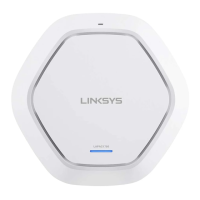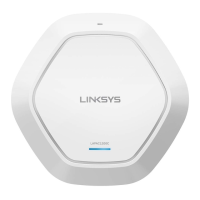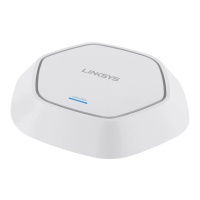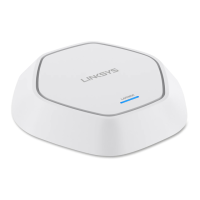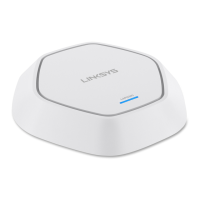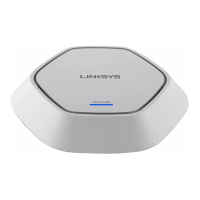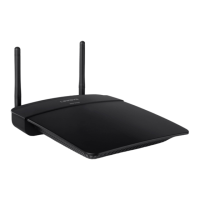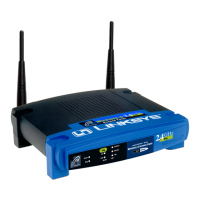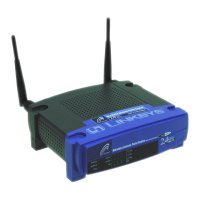46
Section 3: Configuring the Access Point
LAPAC1750PRO Access Point Software User Manual
Table 31: Static WEP
Field Description
Transfer Key
Index
The Transfer Key Index indicates which WEP key the AP
uses to encrypt the data it transmits with WPA devices.
Key indexes 1 through 4 are available. The default is 1.
Key Length Select the length of the key:
• 64 bits
• 128 bits
Key Type Select the length of the key:
• ASCII
• Hex
WEP Keys There are four WEP keys can be set. The keys you enter
depend on the key type selected:
• ASCII: Includes uppercase and lowercase alphabetic
letters, the numeric digits, and special symbols such
as @ and #.
• Hex: Hexadecimal (base 16) characters (0-9 and A-F).
Use the same number of characters for each key as
specified in the Characters Required field. These are the
RC4 WEP keys shared with the stations using the access
point.
Each client station must be configured to use one of these
same WEP keys in the same slot as specified on the access
point.
The number of characters you enter into the WEP Key
fields is determined by the key length and key type you
select. For example, if you use 128-bit ASCII keys, you
must enter 26 characters in the WEP key. The number of
characters required updates automatically based on how
you set the key length and key type.
Authentication The authentication algorithm defines the method used to
determine whether a client station is allowed to associate
with the access point when static WEP is the security
mode.
• Open System: authentication allows any client
station to associate with the WAP device whether
that client station has the correct WEP key or not. This
algorithm is also used in plaintext, IEEE 802.1X, and
WPA modes. When the authentication algorithm is
set to Open System, any client can associate with the
access point.
• Shared Key: authentication requires the client station
to have the correct WEP key in order to associate with
the access point. When the authentication algorithm
is set to Shared Key, a station with an incorrect WEP
key cannot associate with the access point.
• Open System and Shared Key: When you select both
authentication algorithms, client stations configured
to use WEP in shared key mode must have a valid
WEP key in order to associate with the access point.
Also, client stations configured to use WEP as an open
system (shared key mode not enabled) can associate
with the access point even if they do not have the
correct WEP key.
NOTE:
After you configure the security settings, you must click Save to apply the
changes and save the changes to startup configuration file.
